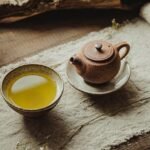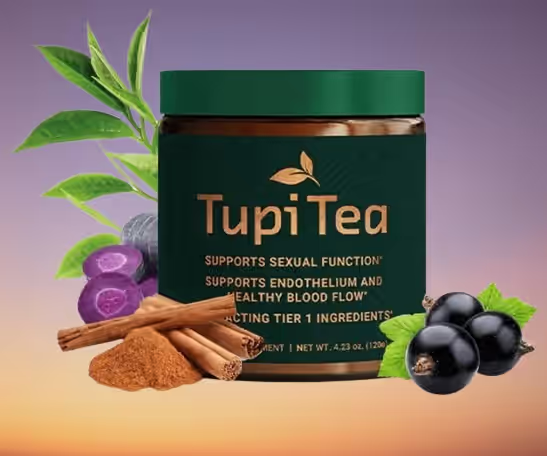Table of Contents
In the world of tea, two varieties stand out for their unique characteristics and health benefits: green tea Sencha and Matcha, both originating from Japan.
Sencha, the most consumed tea in Japan, is known for its delicate balance of sweetness and bitterness. On the other hand, Matcha, a vibrant green powdered tea, is the star of traditional Japanese tea ceremonies.
Both these teas are rich in antioxidants, particularly epigallocatechin gallate (EGCG), a compound studied for its potential cancer-fighting properties. They also contain L-theanine, an amino acid that promotes relaxation and mental clarity.
In this article, we will delve into the benefits of these remarkable teas. We’ll explore their origins, cultivation processes, and the unique ways they are brewed and consumed.
Join us on this journey as we uncover the secrets of green tea Sencha and Matcha, and learn how to incorporate them into a healthy lifestyle.
Understanding Green Tea Sencha and Matcha
Sencha and Matcha are both treasured types of green tea that originate from Japan. Each has distinct qualities and processing methods that contribute to their unique flavors and benefits.
Organic sencha is typically enjoyed in leaf form, with leaves carefully steeped in hot water. In contrast, Matcha is consumed as a finely ground powder whisked into a smooth, frothy drink.
The experience of drinking these teas is different, as is their preparation. Here’s a quick comparison of their main distinctions:
- Form: Sencha (leaf) vs. Matcha (powder)
- Preparation: Steeped vs. Whisked
- Color: Light green vs. Vivid green
- Taste: Fresh and grassy vs. Rich and creamy
Additionally, both teas are celebrated for their nutritional profiles. While Sencha and Matcha share similarities, their unique qualities attract diverse audiences and uses. Understanding these differences can enhance your appreciation and enjoyment of each tea.
The Origins of Sencha and Matcha
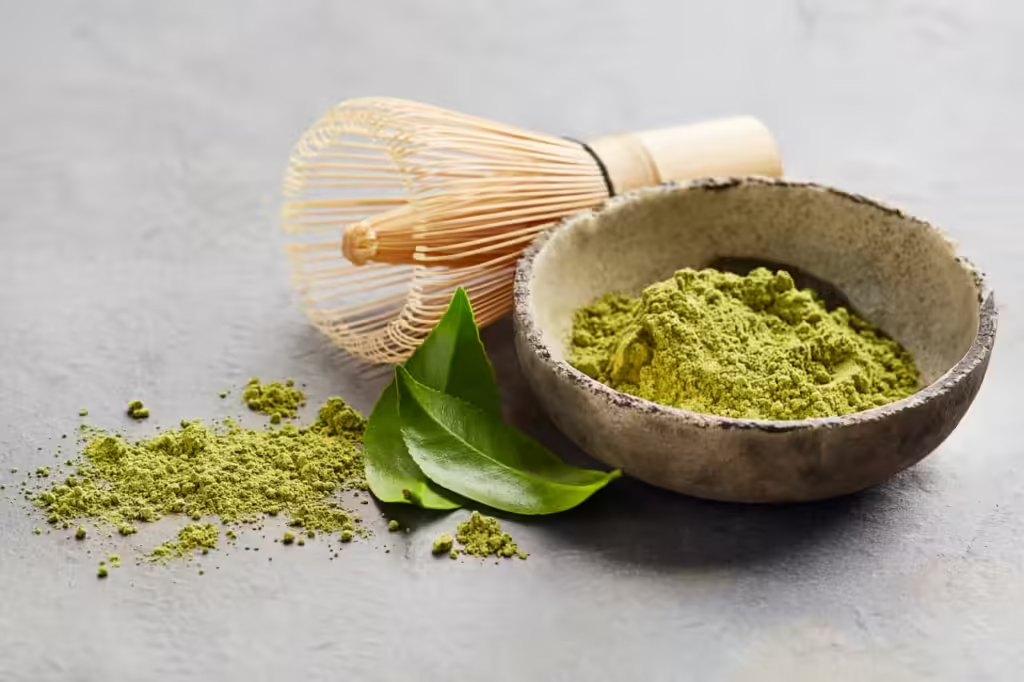
Sencha first became popular in Japan during the 17th century. It quickly rose in prominence due to its pleasant aroma and refreshing taste.
Matcha has a longer history, dating back to the 12th century. It was originally brought to Japan by Zen monks for meditation practices. Over time, Matcha became a central element of Japanese tea ceremonies, admired for its rich tradition and vibrant hue.
Both Sencha and Matcha share deep roots in Japanese culture, showcasing Japan’s rich tea heritage.
Cultivation and Processing Differences
The cultivation of Sencha and Matcha differs significantly, starting with the growing conditions. Sencha is typically grown in full sunlight, which contributes to its light and fresh taste.
In contrast, Matcha is shaded for up to three weeks before harvest. This shading increases the chlorophyll content, giving Matcha its vibrant green color and distinctive flavor.
After harvest, Sencha leaves are steamed, rolled, and dried, preserving their fresh aroma. Matcha leaves, known as tencha, skip the rolling step and are stone-ground into a fine powder.
These processes impact both the taste and nutritional content of the teas. The full consumption of the leaf in Matcha provides more antioxidants and nutrients compared to Sencha.
Understanding these cultivation and processing differences adds depth to appreciating why Sencha and Matcha are celebrated across the world.
👉 Discover the Refreshing Purity of Premium Sencha Tea! 👈
Nutritional Profiles and Health Benefits
Both Sencha and Matcha offer impressive health benefits, thanks to their rich nutritional content. These teas are packed with antioxidants, amino acids, vitamins, and minerals, which contribute to their health-promoting properties.
Antioxidants in green tea combat oxidative stress, a key factor in aging and chronic diseases. Regular consumption is linked to reduced risks of various health conditions.
Key nutrients found in both Sencha and Matcha include:
- Antioxidants: Including EGCG, a powerful compound
- L-theanine: An amino acid for calmness and focus
- Chlorophyll: Known for its detoxifying properties
- Vitamin C: Supports immune function and skin health
These components work together, providing a range of benefits that go beyond simple refreshment. Here’s a closer look at the specific health advantages attributed to these Japanese teas.
Antioxidants and Catechins: EGCG in the Spotlight
Epigallocatechin gallate (EGCG) is a powerful antioxidant found in green tea. It’s particularly abundant in both Sencha and Matcha, with Matcha having the edge due to its powdered form.
EGCG has drawn attention for its potential to fight cancer by inhibiting tumor growth. Additionally, it protects cells from damage caused by free radicals.
The antioxidant profile of these teas helps shield your body from oxidative stress. Ultimately, regular intake may lower the risk of chronic disease development.
The Calming Effects of L-Theanine
L-theanine is an amino acid present in both Sencha and Matcha that promotes relaxation. This compound uniquely enhances focus without causing drowsiness.
It’s known for its ability to reduce anxiety and stress levels, making it a natural choice for those seeking mental clarity. L-theanine also plays a role in improving sleep quality by supporting restful brain activity.
In combination with caffeine, L-theanine provides a balanced energy boost. This synergy is especially prominent in Matcha, offering a calm alertness preferred by many over coffee.
Weight Loss and Metabolism
Sencha and Matcha can support weight management efforts, thanks to their metabolism-boosting properties. Catechins like EGCG have been shown to increase calorie burning during exercise.
These teas may also enhance fat oxidation, helping the body burn fat more effectively. Including them in a balanced diet and exercise routine can lead to visible results.
Moreover, Matcha’s concentrated form allows for greater absorption of these beneficial compounds. A single serving provides a potent dose to aid weight loss goals.
Heart Health and Immune Support
Green tea compounds, such as catechins, contribute to heart health by supporting blood vessel function. They help reduce blood pressure and lower LDL cholesterol levels.
Consistent consumption of Sencha and Matcha has been associated with a lower risk of cardiovascular diseases. Beyond heart health, these teas contain antibacterial and antiviral properties.
This makes them a strong ally for supporting the immune system. Vitamins, minerals, and polyphenols in green tea can strengthen the body’s natural defenses.
Detoxification and Skin Health
Matcha, in particular, is rich in chlorophyll, a compound that aids in detoxification. Chlorophyll helps eliminate toxins and heavy metals from the body.
This detoxifying effect can contribute to clearer, healthier skin. Sencha and Matcha possess anti-inflammatory properties, which are beneficial for skin conditions.
These teas may improve complexion by reducing signs of aging and fighting free radicals. Incorporating Sencha or Matcha into your wellness routine can promote a radiant, youthful appearance.
👉 Boost Your Day with Ceremonial Grade Matcha Tea! 👈
Brewing the Perfect Cup
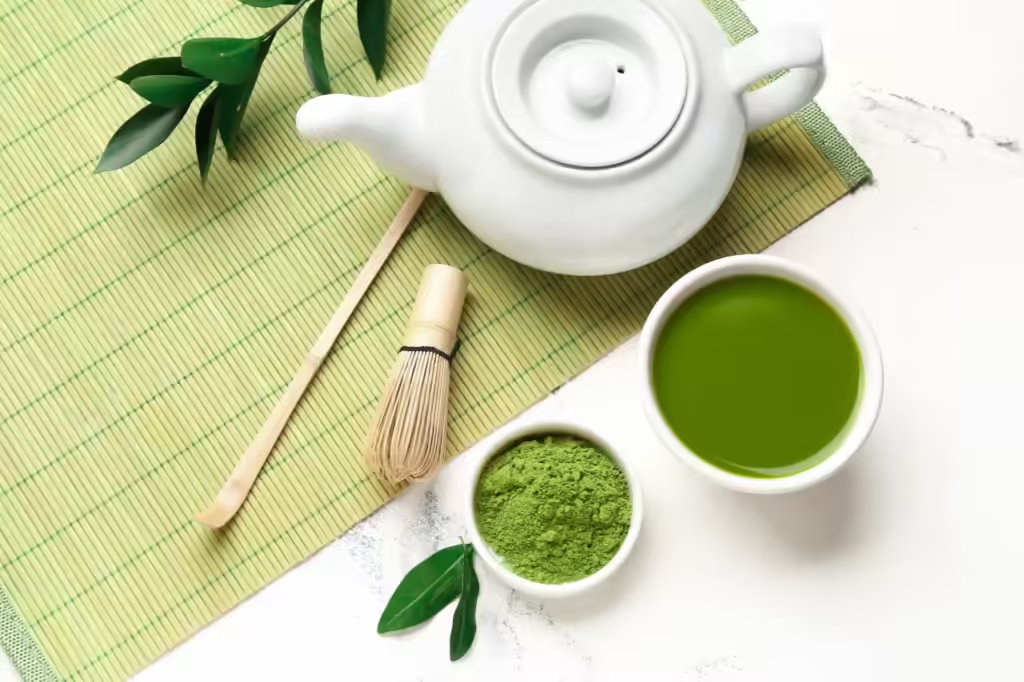
Brewing green tea sencha and matcha to perfection involves appreciating their nuanced flavors and aromas. The process elevates the drinking experience and unlocks their health benefits.
For tea enthusiasts, mastering the art of brewing is essential. Each tea requires different techniques to achieve its full potential.
Here are key aspects to consider when brewing these Japanese teas:
- Water temperature: Critical to avoid bitterness
- Quality of water: Pure, filtered for best results
- Brewing time: Varies between Sencha and Matcha
Attaining the right balance in brewing involves practice and attention to detail. Begin with the right tools and proceed with care. Each cup brewed correctly offers refreshment, warmth, and relaxation. Now, let’s delve into the distinct brewing methods for Sencha and Matcha.
Sencha Brewing Techniques
Brewing Sencha involves steeping loose leaves in hot water. The temperature is crucial: aim for 160-175°F (70-80°C) to prevent bitterness.
Start by measuring about a teaspoon of Sencha per cup. Use a teapot or infuser for even immersion. Pour water over the leaves and steep for about a minute.
Taste, adjust the steeping time if needed, then enjoy the subtle balance of sweetness and astringency. Multiple infusions from the same leaves will reveal evolving flavors.
Matcha Preparation Essentials
Preparing Matcha is a ceremonial process that requires focus. Begin by sifting a teaspoon of Matcha powder into a bowl.
Add a small amount of hot water, around 175°F (80°C), to the powder. A bamboo whisk, known as a chasen, is used to create a frothy mixture.
Whisk briskly in a zigzag motion until smooth and frothy. Matcha’s vibrant color and rich flavor emerge when correctly prepared.
Enjoy it straight from the bowl or as part of lattes and smoothies. Each sip brings a velvety texture and earthy aroma, characteristic of high-quality Matcha.
👉 Sip Pure Green Energy – Try Top Matcha Today! 👈
Culinary Uses and Recipes
Sencha and Matcha extend beyond traditional tea preparations, offering a versatile range of culinary applications. Using these teas creatively can enhance both flavor and nutrition in various dishes.
Incorporating Matcha and Sencha into recipes is popular among chefs and home cooks. Their distinctive profiles lend a unique twist to both savory and sweet creations.
Experiment with these ideas in your kitchen:
- Matcha lattes: Creamy with vibrant color
- Sencha-infused soups: Add depth to broths
- Matcha pancakes: For a healthy breakfast
- Sencha rice: Infuse rice with aroma and flavor
From baked goods to savory entrées, incorporating green tea brings complexity to your culinary repertoire. These teas are prized for their adaptability, enabling endless creative possibilities in the kitchen.
Cooking with Matcha: Beyond the Tea Bowl
Matcha is a star ingredient due to its vibrant hue and robust flavor. Beyond tea, it brings a distinct depth and color to baked goods.
Matcha can be whisked into batters for cakes and muffins. Its bold taste pairs delightfully with sweet ingredients, like chocolate or vanilla.
In ice creams and desserts, Matcha offers a bittersweet twist. For a refreshing treat, try Matcha smoothies or use it in frostings.
Utilizing Matcha in these ways elevates simple dishes, transforming them into gourmet delights. Its versatility makes it a staple in modern cooking.
Sencha in the Kitchen
Sencha offers subtle yet impactful flavors, making it an ideal partner in savory dishes. Infusing Sencha into broths and soups adds aromatic depth.
Blending Sencha with rice yields a fragrant side dish. The tea’s gentle notes balance well with proteins and vegetables.
For a unique marinade, consider using Sencha. It can tenderize meat and impart a delicate floral aroma.
Sencha’s versatility extends to sauces and dressings, enhancing salads and seafood. These culinary techniques showcase Sencha’s potential beyond the cup, enriching everyday meals.
👉 Sip the Best of Japan – Try Authentic Sencha Today! 👈
Choosing and Storing Your Tea
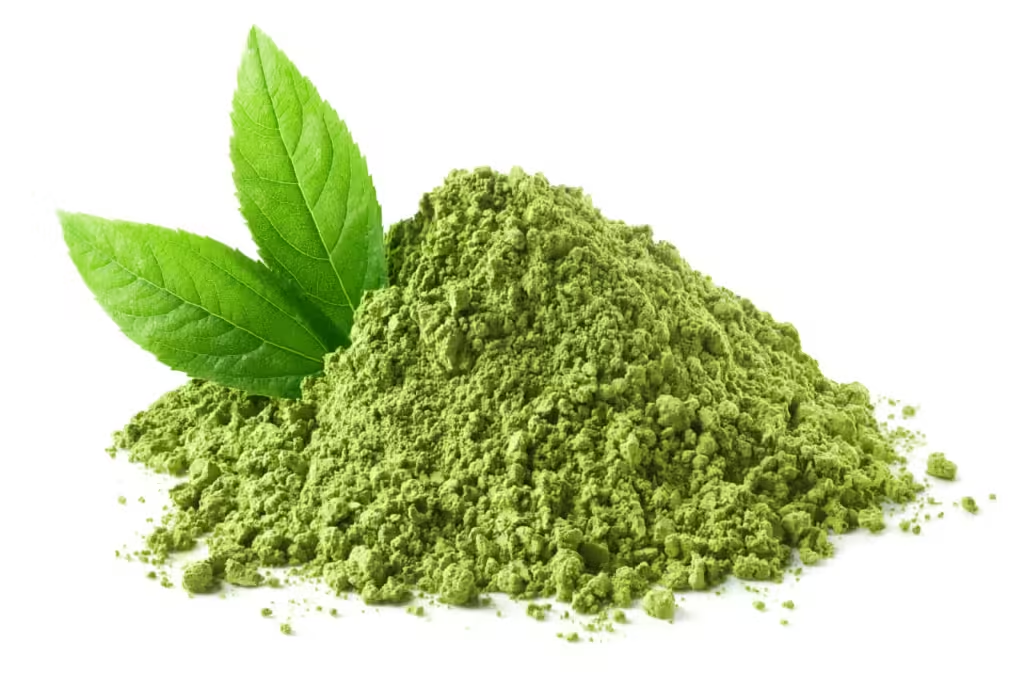
Selecting and storing high-quality Sencha and Matcha is crucial for enjoying their full range of flavors and benefits. Proper handling ensures your tea remains fresh and flavorful over time.
When selecting your tea, look for vibrant colors and rich aromas. These signs often indicate freshness and quality, key factors in both Sencha and Matcha.
Storage plays an essential role in maintaining tea’s quality. Air, moisture, and light can degrade tea’s delicate compounds over time.
To help preserve your teas:
- Store in airtight containers: Minimize oxidation.
- Keep away from light: Prevent flavor degradation.
- Avoid moisture: Maintain dryness to protect texture.
- Use within recommended period: Ensure peak freshness.
Understanding how to choose and store your green teas will not only enhance your enjoyment but also maximize the health benefits they offer.
Selecting High-Quality Green Tea Sencha and Matcha
Choosing high-quality Sencha and Matcha involves more than just picking any brand off the shelf. Look for reputable sources that emphasize ethical farming practices, ensuring purity and sustainability.
Sencha should appear vibrant green, with crisp, unbroken leaves. Its aroma should be fresh and slightly sweet, indicative of high quality.
For Matcha, seek out a fine powder with a bright, luminous green color. High-quality Matcha emits a sweet, grassy aroma and should dissolve smoothly in water.
When possible, opt for organic varieties. They are free of pesticides and better for the environment, ensuring a clean and wholesome tea experience.
Storage Tips for Freshness and Flavor
Proper storage is vital for preserving the freshness and flavor of Sencha and Matcha. Start by transferring your tea into airtight containers to guard against oxidation and flavor degradation.
Place the containers in a cool, dark place, away from direct sunlight. This prevents the breakdown of the tea’s vibrant color and taste.
Humidity can spoil tea, so maintain dryness by storing them in a low-humidity environment. Avoid storing in the fridge, as condensation can form when opened.
Consume your Sencha and Matcha within the recommended period, usually six months to a year. Freshness ensures that you experience the fullest flavor and health benefits these teas offer.
👉 Fresh, Vibrant, and Green – Experience Top Sencha Tea! 👈
Cultural Significance and Modern Trends
Sencha and Matcha are more than just beverages; they hold deep cultural significance in Japan. The art of tea drinking, especially Matcha, is intertwined with Japanese customs and ceremonies, symbolizing mindfulness and respect.
Over time, these teas have ventured beyond Japan, capturing the attention of a global audience. Their health benefits contribute significantly to this rising international interest.
The world has embraced these teas in modern applications, inspiring culinary and wellness trends alike. Their versatility is unparalleled, fueling innovation in recipes and health practices.
Key cultural and modern trends include:
- Japanese Tea Ceremony: An art form reflecting harmony and respect.
- Global Health Movement: Advocating for natural and wholesome teas.
- Culinary Innovation: Teas as ingredients in desserts, smoothies, and more.
Exploring these traditions and trends not only enhances appreciation but also offers new experiences for tea lovers everywhere.
The Role of Tea in Japanese Culture
Tea holds a revered place in Japanese culture, particularly Sencha and Matcha. These teas are integral to social rituals and spiritual practices, fostering connections and reflection.
The Japanese tea ceremony, a beautiful ritual, highlights Matcha’s importance. It embodies principles such as harmony, respect, and tranquility.
Beyond ceremonies, tea is a staple in daily life, offering moments of respite and connection. Sencha, often consumed casually, represents warmth and hospitality in homes.
Understanding this cultural role enriches appreciation for Sencha and Matcha. It transforms a simple cup of tea into a deeper cultural experience.
Sencha and Matcha Tea in the Global Market
Sencha and Matcha have achieved a significant presence in the global market. Their distinctive flavors and health benefits have attracted a widespread following.
Matcha’s vibrant color and unique flavor have made it a favorite worldwide, especially in wellness circles. Its aesthetic appeal resonates with health enthusiasts and culinary artists alike.
Sencha is appreciated for its refreshing taste and versatility. It has captivated tea drinkers seeking a light and energizing alternative.
The international appeal of these teas is bolstered by their adaptability. From cafes to health stores, Sencha and Matcha continue to influence tastes and trends globally.
👉 Discover the Bold, Vibrant Taste of Premium Matcha! 👈
Conclusion on Green Tea Sencha and Matcha
Sencha and Matcha offer unique tastes and many health benefits. Their rich cultural heritage enhances their appeal, inviting tea enthusiasts worldwide to explore deeper.
Each cup of these teas brings a moment of tranquility and refreshment. It’s more than a simple beverage; it’s an experience of mindfulness and wellness.
We invite you to explore the world of Sencha and Matcha. Try different varieties, experiment with brewing, and savor their flavors.
Share your tea journey with others. Discover how these green wonders can enrich your daily routine and well-being. Enjoy the health and cultural beauty they offer.



